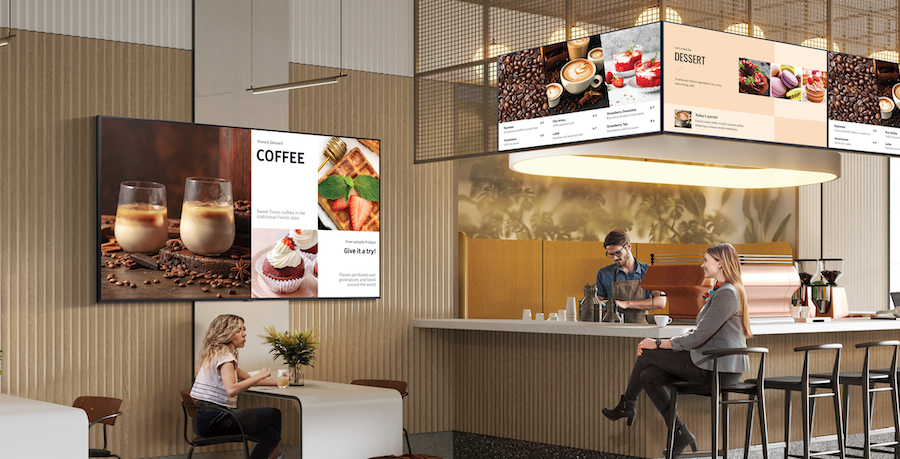Bussiness
How digital transformation helps small businesses grow – Samsung Business Insights

It’s a vision that appeals to every small business owner — one in which the technology they choose works exactly as expected and achieves the intended goals. Software and hardware are perfectly integrated, functioning like a cohesive team. No sudden glitches or breakdowns bring business processes to a halt. Not only does the technology support the kind of customer experiences that keep people coming back, but it also makes staff feel empowered.
The good news is that there are practical steps you can take to turn this vision into a reality. Most small businesses are figuring out those steps right now through digital transformation.
For example, according to data from the U.S. Chamber of Commerce, 81% of small businesses plan to increase their technology use in the coming year. More than three-quarters (77%) are specifically looking at emerging technologies. Best of all, 79% say technology has helped them avoid raising customer prices.
One of the best ways to advance digital transformation is by getting hands-on with products that can have a tangible impact on the business. Samsung is making that easier than ever by holding a giveaway this month where the winner will get the easy-to-implement BED-H Series 4K Business Pro TV as part of its Celebrate Small Business event and Small Business Saturday.
Pro TVs and displays are critical in bringing digital transformation to life. When used strategically, they enable you to:
1. Draw traffic from the outside
Once customers step inside your store or restaurant, there are ample opportunities to engage them with attractively designed product imagery and via employees who provide expert assistance. The challenge is often getting them to cross the threshold in the first place.
How to plan and deploy direct view LED signage
Everything you need to know about choosing your LED displays for optimal viewing indoors and out.
Download Now
Digital window displays provide an opportunity to go beyond static signage. They’re a means to combine photos, videos and text to turn customers’ heads and convince them to step in. This approach allows you to extend your messaging so that it’s inviting but informative, setting the stage for what they’ll experience when they visit.
With dual-sided displays, you effectively double the potential to showcase your products, advertise special promotions and boost overall brand visibility indoors and out.
2. Use content to inform, educate and convert
The stories you tell using indoor signage can help people at every stage of the customer journey. This includes assisting them in discovering which products they should buy, teaching them about key features and anything else they need to know to feel confident about their purchases.
Menu boards, for example, can outline what meals a restaurant has available and the ingredients behind them, nutritional information, and details about flavor. Other indoor signage displays can shine a bigger spotlight on your most glowing reviews and testimonials, capture what customers say about your brand on social media and introduce customers to your star employees.
Of course, sales and special discounts will always draw customers’ eyes toward a digital display, as will content that gives them tips on using products and complementary items they could add to their orders.
3. Simplify purchases
When customers spend time with you, the bulk of it should be spent browsing products or enjoying a meal, not trying to track down hard-to-find items or standing in line to pay.
This is why digital transformation often includes efforts to provide self-service capabilities. Customers can save time when they’re equipped with tools that let them look up products and pricing or place orders themselves rather than flagging down an employee.
By setting up self-service kiosks, for example, small businesses empower customers with a simple but effective way to quickly pay for purchases with just a few taps on a touchscreen. More people are becoming familiar with the standard steps in paying through a kiosk daily, which means they will likely become a standard expectation among consumers.
4. Manage it all in one place
The technology small businesses use can be powerful, but digital transformation should be simple. In other words, you want solutions that are easy to use and can be set up in an easy, plug-and-play fashion.
You also want to ensure you have a content management system (CMS) that streamlines the process of changing or updating the content you feed to window displays, indoor signage, menu boards and kiosks. With Samsung VXT, for example, you can not only remotely manage signage but schedule content to be displayed — like a sale or a featured menu item — on a particular date and time. VXT also takes the effort out of creating content and synchronizing it across all your devices.
Finally, technology should provide a clear line of sight into what’s happening in your small business, even when you or your team members can’t be out front all the time. Setting up monitors in back office areas can help you track what customers see, make adjustments and tap into internal applications.
Small businesses that succeed with digital transformation can act with greater agility, be more responsive to customers, and are better able to support their employees. From there, the growth path becomes as clear as anything you’ll put on inside signage or a window display.
Discover how Samsung’s Pro TV can help elevate your small business. And don’t miss the “Samsung Celebrates Big Ideas, Small Businesses” live Q&A session focused on empowering small businesses with the latest tech-driven solutions on Wednesday, November 20, and get your chance to win a Samsung Pro TV.











